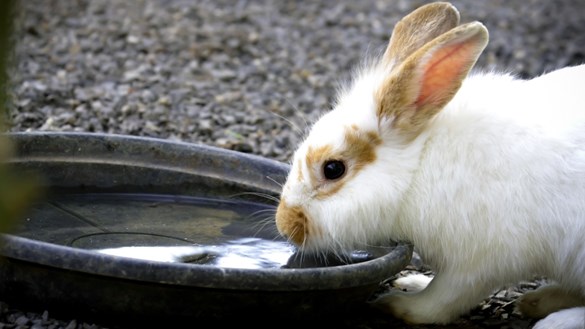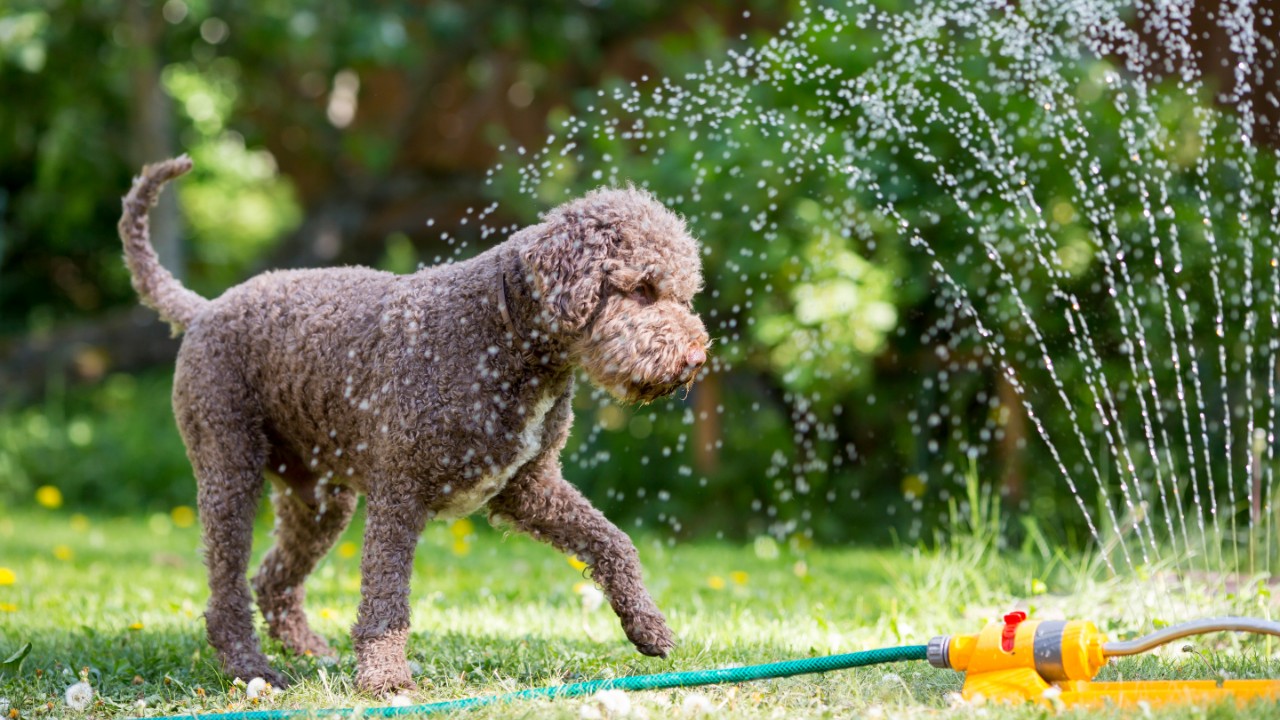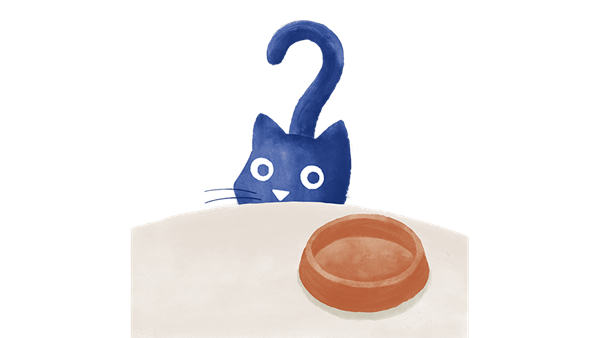How To Keep Your Pet Hydrated And Spot Signs Of Dehydration
It's always important to keep your pet hydrated, it's essential for keeping them healthy. It's even more important during the summer months. Ensure your dog, cat or rabbit is drinking enough with our top 10 tips.

How much water do dogs, cats and rabbits need?
Depending on the pet, it can be hard to keep track of exactly how much water your pet is drinking. For dogs and rabbits be mindful of how much has gone each time you refill. It’s trickier with cats, you’ll need to just observe them a bit and make sure that they are drinking something.
However much they are drinking; they’ll need more in warmer weather as they’re more likely to become dehydrated. Cats and dogs both sweat through their paw pads, and dogs also lose body water through panting. As they’ll do more of this when the weather is hot, you need to make sure they’re are taking on board plenty of water.

Pets that are more active will need more water than sedentary pets. Dogs that go on regular long walks will need plenty of hydration; you should always take water with you.
Outdoor cats that like to explore their natural environment will need more than a cat that lazes around indoors. For rabbits, make sure you give them plenty of opportunities to drink after they’ve exercised in a run.
You are what you eat
Your pet’s diet will also have an impact on their hydration levels. Wet food has a higher water content than dry, so it can be a good option during warm weather. As always, with dry food, you need to make sure that there is plenty of water close by.
Discover our nutrition guides for dogs, cats and rabbits.
Signs of dehydration in dogs, cats and rabbits
Dehydration in a dog, cat or rabbit can result in the following symptoms:
- Vomiting and/or diarrhoea
- Loss of energy
- Excessive, ongoing panting
- Loss of appetite
- Sunken, dry eyes
- Dry, sticky gums
- Loss of skin elasticity
- Urinating less frequently
Our top tips for keeping your pet hydrated in hot weather
1. Plenty of water bowls
Setting up plenty of water bowls throughout the house and garden will give cats and dogs lots of opportunity to keep themselves hydrated.
Putting bowls in new or unexpected areas can also pique their interest and encourage them to drink. Placing them in areas that have less animal or human traffic will also make your pet feel more secure about taking time to drink. Using unusual water containers, like a plastic cup or mug, can be particularly effective in encouraging cats to drink – they’re attracted to the water tension on top, so make sure you fill it right up.
2. Running water
Running water feels colder than standing water, so experimenting with automatic water fountains can be a great way to encourage your pet to drink, while also providing stimulation. Cats in particular may take a bit of time to drink from a fountain, you’ll need to be patient.
Some cat’s like to drink from the bathroom taps, if it encourages them to drink more it’s worth entertaining. Alternatively, introduce them to a garden tap or hose on a very slow setting.
3. Adding water to dry food
If your pet eats mostly dry food, you could try adding a small amount of water to it to increase their water intake - many pets also enjoy the change in texture. It’s important to introduce the extra fluid gradually, as adding too much, too quickly can be off putting for your pet. Remember to thoroughly clean out the bowl after they’ve finished and always avoid leaving wet food out in the heat.
4. Give rabbits bowls and bottles
It’s always a good idea to give pet rabbits both a sipper bottle as well as a heavy water bowl.
Most rabbits will have their own preference, but bottles can become blocked and bowls can get knocked over. Giving them both, particularly in their run, will ensure they’ll always have water.
5. Pet lollies
Freezing pet-friendly ice lollies are a fun way to provide your pet with extra hydration while cooling them down in hot weather. Fill an ice lolly mould with a small amount of wet food and water, or a blended mix of apple and banana, and freeze it overnight.
It’s important to watch your pet to ensure they don’t bite the lolly as this may damage their teeth and could become a choking hazard. For this reason, we don’t suggest giving your pet ice cubes unless they are closely supervised.
You should not give your rabbit frozen treats, as this can cause gut stasis which disrupts their digestive tract.
6. Add something sweet
Rubbing something sweet and rabbit-friendly, like a small piece of banana, on the spout of their water bottle can encourage your rabbit to drink from it.
This can be particularly useful for rabbits that are ill or recovering from surgery.
7. Hydration on the move
Whenever you take your dog on a long journey or a walk, it’s important to take plenty of water to keep them suitably hydrated. If you’re going on a long car journey, we recommend you take at least five litres of water with you to ensure you have enough in case of a breakdown.

Collapsible water bowls and bowls with water bottles attached are great options for on-the-go hydration.
8. Little and often
Serving your pet smaller, more frequent meals can encourage your pet to drink at regular points during the day, particularly if they have dry food.
Most rabbits and cats don’t like to eat or drink near their toilet, so remember to place their food and water bowls away from their litter tray.
9. Add some flavour
Adding a small amount of water from tinned tuna for cats, or low-salt chicken broth for dogs, into their water bowl can make it much more appealing to drink from. Remember to wash the bowl out thoroughly at the end of the day to stop it smelling.
Rabbit owners could also add coriander leaves to their rabbit’s water bowl for the same effect. This is particularly useful for encouraging rabbits to drink post-surgery.
10. Fresh vegetables
A small handful of fresh vegetables or fresh, green grass helps hydrate rabbits due to the high water content.
Remember not to overdo it though; too much fresh food can be very rich for a rabbit’s stomachs. Always stick to the ratio of 80% hay, 15% fresh vegetables and 5% high-quality pellet food.
If you suspect your pet is dehydrated, contact your vet immediately.

Pet Care & Advice
At Medivet, we’re committed to providing trustworthy, expert advice that helps you care for your pet.
Search advice

Medivet Healthcare Plan
On average our clients save an average of £225 with the Medivet Healthcare Plan.
Learn more


